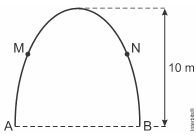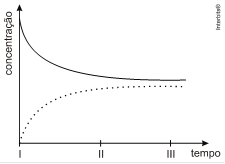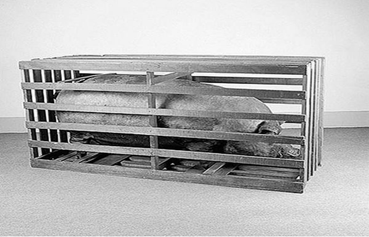Entre 1879 e 1882 formou-se na Europa uma aliança política e militar conhecida por Tríplice Aliança. Entre 1894 e 1907, constituiu-se outra, em moldes similares, chamada Tríplice Entente. Quais os países que formavam cada uma dessas alianças?
Questões relacionadas
- Matemática | 3.3 Quadrática ou 2° Grau
A imagem abaixo representa um portal de entrada de uma cidade cuja forma e um arco de parábola. A largura da base (AB) do portal e 8m e sua altura é de 10m. A largura MN em metros, de um vitral colocado a 6,4 metros acima da base é:

- Química | 2.4 Cinética Química
O gráfico a seguir representa o andamento da reação A(g) ↔B(g).

Com base nessas informações, é CORRETO afirmar que
- Arte | 6.4 Tendências Contemporâneas
TEXTO I

LEINER, N. O porco, 1966. Disponível em: https://arteseanp.blogspot.com. Acesso em: 20 maio 2021.
TEXTO II
A postura bem-humorada e crítica de Leirner começou a ganhar corpo nos anos 60, quando ele fundou o Grupo Rex ao lado de Wesley Duke Lee, Geraldo de Barros, José Resende, Carlos Farjado e Frederico Nasser. O coletivo artístico se valia da ironia e da irreverência para debater as críticas de jornal, os museus e as bienais, por exemplo. Tanto que em 1967, Nelson Leirner apresentou a obra Porco Empalhado, no IV Salão de Brasília. No dia seguinte, ao constatar que a obra havia sido aceita no salão, o artista publicou nos jornais uma fotografia do trabalho acompanhada da pergunta: “Que critérios o júri visou para aceitá-lo?”
Disponível em: vejasp.abril.com.br. Acesso: 20 maio. 2021.
De acordo com os textos e os conhecimentos sobre a arte de vanguarda brasileira, podemos dizer que a produção de Leirner tinha por objetivo principal
- Física | 7.2 Quântica
Em 1900, Max Planck propôs uma explicação sobre a radiação de corpo negro. Sua equação ficou conhecida em todo o mundo porque relacionava pela primeira vez a energia emitida por um corpo negro com a sua frequência de emissão em pacotes discretos, chamados de fótons. A constante de proporcionalidade ficou conhecida como constante de Planck.A unidade de medida dessa constante é dada por:
- Geografia | 6.3 Mineração

Os 225,8 km de água enlameada que cruzam a Floresta Amazônica anunciam a tragédia adiante: megagarimpos ilegais encravados na Terra Indígena Munduruku e na Floresta Nacional do Crepori, no sudoeste do Pará. Mas, ao contrário do rio Doce, a destruição do remoto rio das Tropas acontece de forma oculta – menos para os índios. Cansados de esperar uma intervenção do Estado, guerreiros e lideranças da etnia, incluindo o cacique geral, Arnaldo Kaba, organizaram uma expedição para expulsar os garimpeiros não indígenas do local. Em seis lanchas, dezenas viajaram armados com flechas e espingardas de caça, incluindo mulheres, crianças e idosos.
Folha de São Paulo, 04 fev. 2018. Disponível em: https://www1.folha.uol.com.br. Acesso em: 2 mar. 2021.
A constante situação conflituosa externada na notícia acima revela distintos interesses de grupos humanos quanto ao